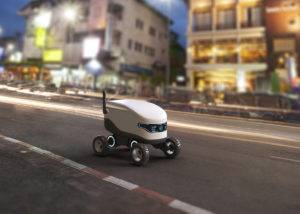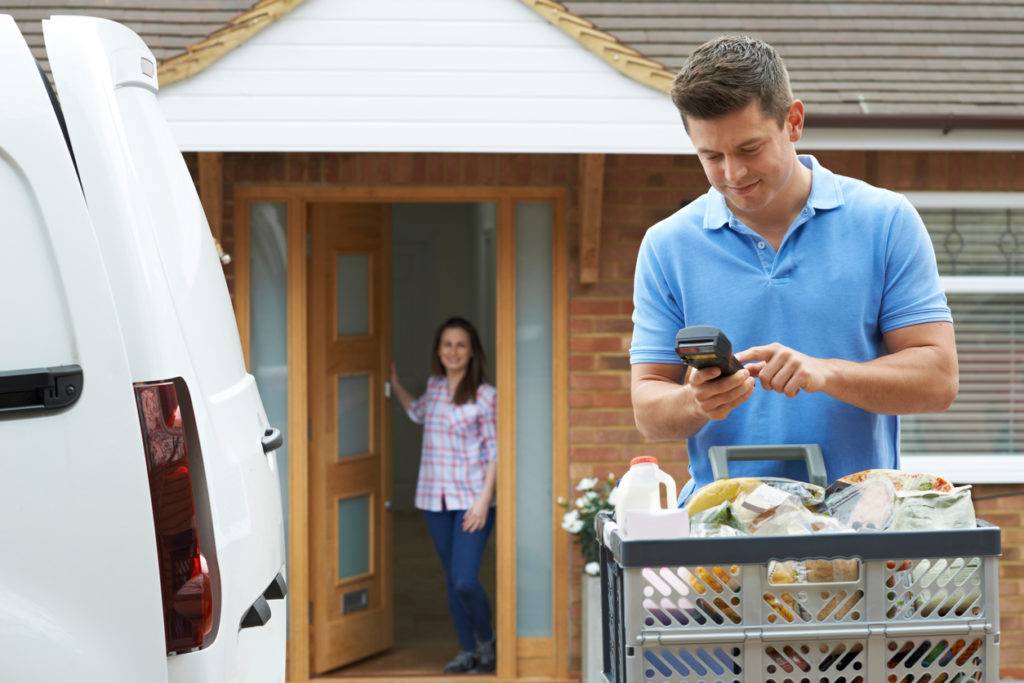Another advantage of in-store pick-ups is that while the customer is already there, they might be provoked into some more shopping. Also, in this option you don’t need to care about restrictions involved in selling alcohol and tobacco products since you are able to check the customer’s ID. Think about adjusting your pickup time slot lengths and pricing by day-of-week and time as you would with home deliveries.
Click & Collect Loyalty
Whereas, the Click & Collect system is a variation on the same idea. Popularised during the Covid-19 pandemic due to the reduced risk of infection in-store, customers placed a grocery order online and then drove to their nearest site to collect.
Again, this creates added opportunity for customer loyalty and retention. In 2022, Tesco have launched a monthly plan to their UK customer base which sees one fee secure them any slot for collection. Whilst this may be less cost efficient for them in the short term, Tesco can rely on their customer base to essentially ignore all other click & collect options on the market due to their subscription basis.
Remote collection points
Some of your potential customers might be living far from your store. For those customers, you can choose to offer a once a week home delivery service, or longer delivery slots. Another option is to set up a remote pick-up service where all orders are delivered to a pick-up location at a specific time for an hour or two, with the driver waiting on-spot.
This would save you a lot of time and cost while still adding value to the customer.
The most cost efficient form of pick-up services are the ones that require no on-site personnel (we call them cold stations): simply set up a locker where all your orders are delivered and let your customers pick up their groceries at their discretion. Good locations for cold stations are in busy sites such as train stations and airports as well as in lobbies or courtyards of large apartment complexes.
How to decide the right delivery model for your grocery store
How to make the decision on whether to implement a pick-up, home
delivery service or click & collect? This depends on your customer base and the budget in use. If your resources are limited, a pick-up model is usually the best way to get started.
Pick-ups are not as tied to time slots and for many people, swinging
into a parking lot for a few minutes makes more sense than waiting
around the house for a delivery. It’s always easier to expand from
pick-ups to home deliveries than the other way around, and this way you
have a good opportunity to analyze which products sell well online
before expanding to home deliveries. The pick-up model is many times the
most cost efficient option, too: most customers are willing to buy the
same, or close to the same, price for Click & Collect than for home
delivery while your logistics expenses remain considerably lower.
The best way to help your decision making is to carry out a customer
survey and let your customers tell you which delivery models work best
for them.
Naveo tip: See the potential in your area. When defining your
potential customer base, be as creative as you can. Is there a business center or a hospital nearby? Why not bring the offices a basket of freshly baked cupcakes along with some free delivery coupons, and put up a poster in the lobby letting them know about your click & collect and delivery service? After long shifts, the busy professionals will more than likely appreciate having their groceries waiting for them at the parking lot as they head home.
Before choosing your delivery model, think about the following questions:
- What are your main customer groups? Moms, Families, Businesses, Busy professionals, Teenagers?
- What is the geographical spread of your customers? City vs. suburban, remote?
- How are they getting to your store at the moment? Car, walking distance, waiting for opportunity of online ordering?
- Do you have space around your store for curbside pick-ups? Space around the back door, delivery area, customer service?
- Is there demand for remote pickup stops? (Would some of your
customers prefer picking up their order on their way or closer to their
homes vs. in-store?)
- What would be ideal locations for remote pickup stations in your area?
- What kind of parking lots, malls, stations and other open areas can you think of nearby?
- What are your resources in terms of budget; delivery vehicles and -personnel? (Do you plan to use 3rd party delivery service or own staff? Do you need to hire separate personnel vs. use existing resources?)
- How much would you charge for pickup and/or home delivery?
- Are your fees going to be fixed or dynamic, varying by time and
delivery zone? (Fixed fees are usually recommended for closer areas,
dynamic for remote locations.)
- What is your home delivery zone? (We recommend basing your fees on
density of customer locations; the less mileage per delivery, the
smaller the fee)



